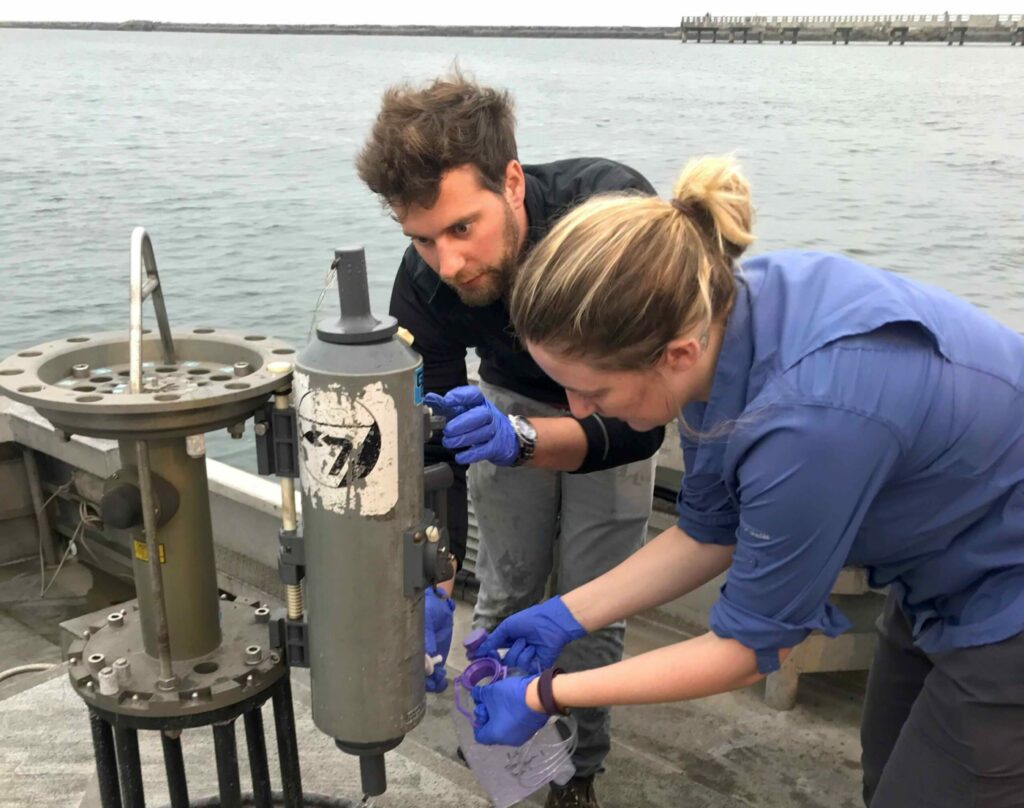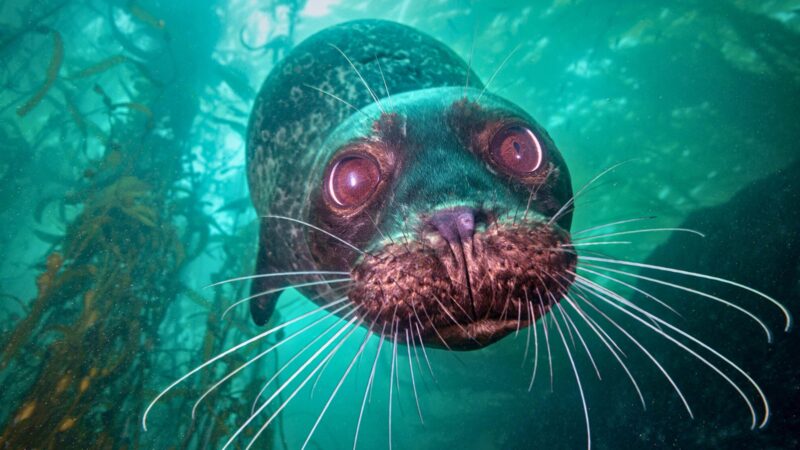
No Ph.D. needed: UCLA scientists help simplify DNA testing for tracking marine species
Demonstration in L.A. ports show that non-academics can use the fast, inexpensive genetic test
With a pilot program in the nation’s busiest port complex, researchers from UCLA, UC Santa Cruz and the Natural History Museum of Los Angeles have created a way for non-scientists to use a complex DNA test to help track fish and other marine animal populations.
The test identifies which species live in a body of water just by analyzing one-liter water samples and finding traces of DNA that have been shed by the animals. The pilot program — conducted with managers at the ports of Los Angeles and Long Beach — demonstrated that environmental DNA, or eDNA, can supplement traditional survey methods that are less efficient and more invasive.
Working with staff from the ports helped the researchers streamline what is normally a complex process to make it accessible to non-academics. The new guide they developed appears in a paper published in the journal PeerJ, with the port managers as co-authors.
The advance is important because those who work in or around the nation’s bodies of water are required by the Clean Water Act and the National Environmental Policy Act to conduct regular monitoring to show that they are not harming wildlife. The research showed that eDNA tests can help supplement traditional survey methods, such as scuba diving for visual surveys, which can be time consuming, or dragging collection nets for catch-and-release surveys, which can stress or kill wildlife.
“eDNA is a really powerful tool for providing insights into the plants and animals inhabiting an ecosystem,” said Paul Barber, a UCLA professor of ecology and evolutionary biology, member of the UCLA Institute of the Environment and Sustainability and a co-author of the research.
The study’s authors created a DNA index so that genetic material in water samples from the ports can be matched against the species known to live there.
“Our guide will make eDNA surveys accessible for resource managers who aren’t molecular biologists and haven’t done a Ph.D. in marine biology,” said lead author Zachary Gold, who did the work while he was a UCLA doctoral student in ecology.
In each of seven trial runs in the port complex, the researchers analyzed eDNA from a dozen one-liter samples taken in the same location and at the same time that port managers dragged collection nets for 200 meters to catch live samples. Not only did the eDNA tests detect 16 out of 17 species captured in the nets, they also detected 55 additional species that the nets missed.
Justin Luedy, a Port of Long Beach senior environmental specialist, said it was exciting to partner with the researchers on emerging science.
“We’ll be watching to see what develops with this field, to determine if it one day may have applications for the ports’ periodic biological surveys of San Pedro Bay,” he said. “Scientific innovations like this can help us further expand our understanding of the harbor’s biodiversity and how our water and sediment management programs are improving harbor conditions over time.”
Input from the port managers helped the scientists address concerns about how the method would work in real-world settings — for example, whether eDNA sampling would pick up traces of fish from miles around or be precise enough to determine whether fish were thriving in specific areas. The researchers also were curious whether eDNA would detect differences in fish populations from samples that were taken relatively close together but from distinct habitats — from a shallow sea-grass bed, say, versus a 100-foot deep draft.
“We can actually tell the difference between water samples taken just 50 feet apart based on the variation in the species we find, which means we’re getting a really high resolution on a fine spatial scale,” Gold said. “Marine protected areas are only a mile or so wide, and eDNA is detailed enough that we’ve been able to take samples inside and outside of protected areas and tell the difference in fish communities.”
The guide developed by the authors encompasses five overarching steps:
- Determine which species to look for.
- Create a DNA reference database of those species.
- Control for false positives from contamination.
- Identify how physically close together and how often to take samples.
- Archive the results to track changes.
One challenge the researchers faced was that the large volume of seafood shipped through the ports created some “false positives” — with the eDNA tests inadvertently picking up small quantities of genetic material from fish that don’t actually live there. By layering the eDNA survey on top of previous visual surveys, the scientists were able to safely exclude species that were known not to live in the ports from the final results.
An eDNA survey can take 24 to 48 hours to identify a single species, and as little as five days to identify species in an entire community. At a cost of about $100, eDNA surveys can cost one-tenth to one-fifth the amount that traditional monitoring methods can cost.
Gold, who is now with the National Oceanic and Atmospheric Administration, said the speed, low cost and ease of eDNA testing could even help researchers track the effects of climate change in near-real time.
“This can be incredibly useful for monitoring climate change, because instead of only sampling a handful of sites once per year, we could be sampling dozens of sites monthly,” he said. “For example, instead of just sampling the 80 kelp forest rocky reefs that are currently consistently monitored in the state, we could monitor 400 or more for the same cost, allowing us to track how species are changing in response to ocean warming.”
Published:



